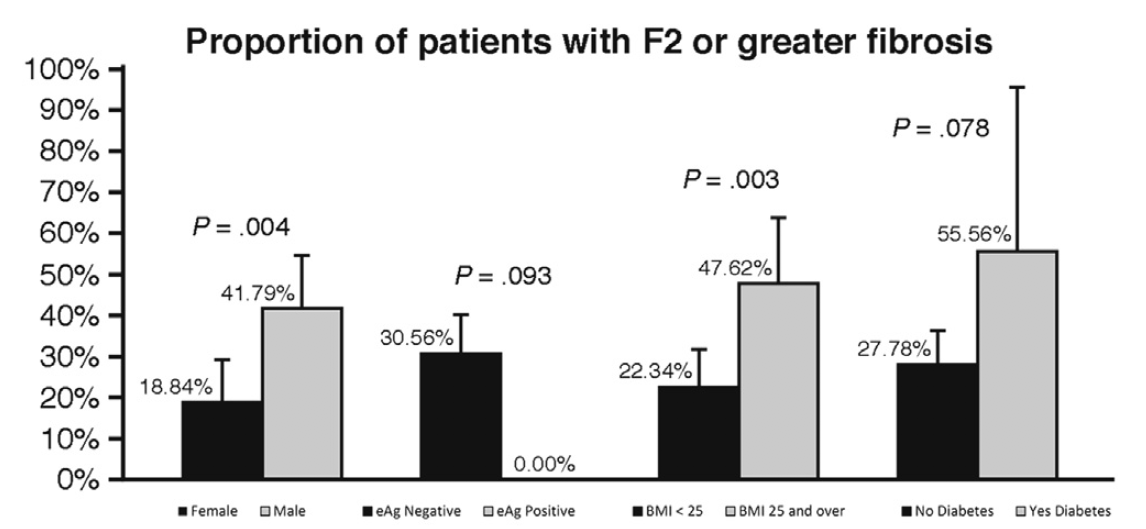Chronic Hepatitis B Virus With Increased Hepatitis B Virus DNA and Normal Alanine Aminotransferase

Significant Hepatic Fibrosis Among Treatment-Naive Chronic Hepatitis B Virus With Increased Hepatitis B Virus DNA and Normal Alanine Aminotransferase
Current treatment guidelines for chronic hepatitis B (CHB) base treatment recommendations on a combination of serum alanine aminotransferase (ALT), hepatitis B virus (HBV) DNA, and hepatic necroinflammation/fibrosis.1–3 Although accurate assessment of liver histologic abnormalities is crucial for determining disease severity, liver biopsy rarely is performed and the findings may not always be accurate. Although elastography and serologic markers can be used to assess fibrosis, in clinical practice treatment decisions often are based on ALT and HBV DNA alone. Thus, it is typical for no further assessment when there is persistently normal ALT (PNALT) levels. This is problematic in some patients given multiple studies of Asian CHB patients showing significant fibrosis in a substantial percentage of patients with PNALT, including both hepatitis B e antigen–positive patients (range, 22.5%–49.4%) and hepatitis B e antigen–negative patients (range, 13.8%–35.9%). It is clear that many patients with PNALT may be in need of treatment.4–7 Our study aimed to evaluate the prevalence of fibrosis among treatmentnaive CHB patients with increased HBV DNA and PNALT levels using serologic testing, radiography, and shear wave elastography (SWE) to assess the correlation between these noninvasive measures of fibrosis.
